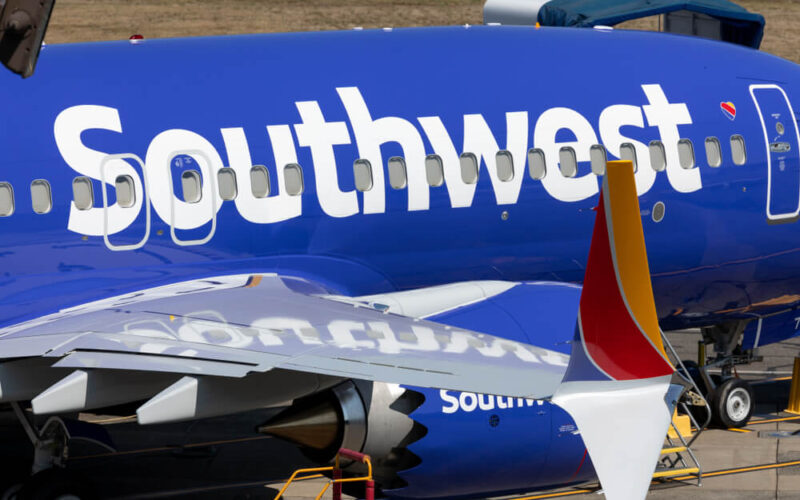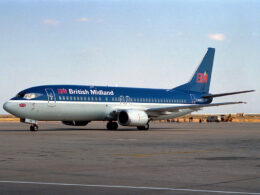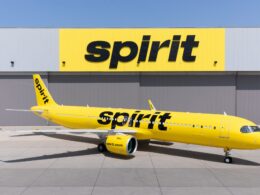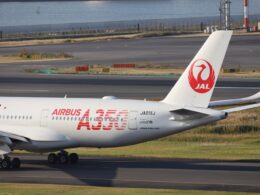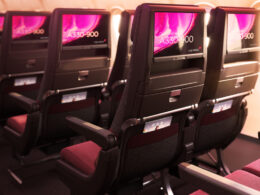The article was first published on October 28, 2019.
The 737 MAX crisis has had an impact on many aspects within the aviation industry – from relationships between airlines and manufacturers, trust among aviation authorities to the relationship between passengers and the industry, the groundings have shifted the industry. What was once the best option to save money in the short-term, has costed Boeing in many ways.
One of its biggest customers, Southwest Airlines (LUV) , has been in the rumor mill of acquiring Airbus aircraft – from a reported meeting with an Airbus A220 operator back in April 2019 to the airline’s Chief Executive Officer (CEO), Gary Kelly telling Bloomberg Markets that the airline “will be looking at that question next year”.
The relationship between Southwest and Boeing, dating back to June 1, 1971, when the manufacturer delivered the first 737 to the carrier, is thought to be untouchable by any other aircraft builder. Throughout those 48 years, nobody managed to curb the relationship between the two, as Southwest was always a loyal Boeing customer.
And it should stay that way.
Going back in time – easyJet case
The United Kingdom-based low-cost carrier, easyJet, was in a similar position in the early 2000s. easyJet wanted to grow – in 2002, the airline engaged in talks with both Airbus and Boeing of acquiring new aircraft to provide the needed capacity to scale-up its business.
However, prior to the decision, easyJet exclusively operated Boeing 737 aircraft – as of September 2002, it had 64 of Boeing’s narrow-bodies, with 12 more 737s coming up until May 2004. On October 15, 2002, easyJet announced something very rare to this day – an all-Boeing operator ordering Airbus aircraft – as it inked a deal with the European manufacturer to acquire 120 A320 family jets, with 120 more options. Prior to this, Airbus’ presence within low-cost carrier fleets was almost non-existent.
The then-Chief Commercial Officer of the manufacturer, John J. Leahy, said:
“This is an important deal. It has been quite strategic for us. Due to some historic factors, our presence hasn’t been that strong with the low-cost airlines”.
The deal was under a lot of scrutiny – some questioned how much of a discount did Airbus give to easyJet to persuade the switch, while some even questioned if the deal was even profitable for the manufacturer. Leahy noted that the deal met their parameters, closing the profitability question.
The daunting similarity with the current Southwest situation is the fact that the Boeing 737 was experiencing severe issues with its rudders during the 1990s, resulting in two deadly crashes: United Airlines Flight 585 (25 people passed away) in 1991 and USAir Flight 427 (132 deaths) in 1994. The aircraft type was not grounded, but the National Transportation Safety Board (NTSB) in its report ordered 737 operators “to incorporate design changes for the B-737 main rudder power control unit servo valve when these changes are made available by Boeing”, as these changes should “preclude the possibility of rudder reversals attributed to the overtravel of the secondary slide”.
easyJet highlighted the issue as a potential risk when the low-cost carrier was acquiring its close rival, a former-British Airways’ subsidiary, Go in 2002:
“As a result of extensive analysis and research by regulators and the manufacturer, Boeing, a number of modifications were recommended. All easyJet’s and Go’s 737-300 aircraft incorporate these modifications. Despite these modifications, there can be no assurance that a material rudder malfunction or related problem will not occur” on one of the airline’s aircraft.
Fleet commonality is a huge advantage for low-cost carriers, but as easyJet’s potential risks have indicated, the commonality “does increase its exposure to risks flowing from design or systemic manufacturing defects of the Boeing 737 series”.
And what was a risk in 2002, has become an unfortunate truth in 2019, after the newest 737 iteration, the MAX, was grounded after the second deadly crash in Ethiopia in March 2019. For 737 MAX operators, the year has been difficult – all have lost huge portions of potential income due to the fact that the carriers are unable to operate the aircraft. Further costs will stem from the fact that the aircraft will have to be restored to an airworthy condition once it is cleared to fly. Not to mention that passengers might think twice before boarding the type. Airlines, including Southwest, have publicly indicated that they will be flexible regarding their passengers.
In May 2019, Southwest Airlines’ (LUV) Chief Marketing Officer, Ryan Green, spoke with CNBC and said that the airline will “allow them to fly on a different flight without paying any difference in fare”, if passengers felt nervous flying onboard a 737 MAX.
The similarities are definitely there – an operational issue with an airline’s exclusively operated aircraft prompts the question of whether it is worth exploring a product from the other side of the Atlantic Ocean.
Yet there are key differences between the two situations.
Southwest situation
First of all, the scale of operations. As mentioned previously, when easyJet was deciding between Airbus and Boeing, the carrier had 64 aircraft in total. Southwest Airlines (LUV) ended Q3 2019 with 752 Boeing 737 aircraft in its fleet. Furthermore, the Dallas-based low-cost carrier also has 383 MAX aircraft on order – 219 firm, 115 options and 19 to be acquired by leasing. The confirmed orders are scheduled to be finished in 2025.
If it were to order Airbus aircraft, the deal would have to be massive in scale – one of the ways low-cost carriers are able to control their costs is ordering a massive amount of aircraft instantaneously just so they could negotiate a discount with the manufacturer, allowing to acquire top of the line aircraft for much better prices than usual. easyJet’s Airbus order in 2002 was just that, as easyJet “has been granted very substantial price concessions by Airbus and the selected engine manufacturer”, states a publicly available letter to its shareholders from 2003:
“The Company believes that it can now purchase Airbus A319 aircraft under the Airbus Contract (taking into account these substantial price concessions) at a price approximately a third per seat below the price for the Boeing 737-700 aircraft delivered to it under the Boeing Contract in August 2002”.
The timing of the deliveries is another big difference. When easyJet ordered its first Airbus aircraft, it received the first delivery in 2003, and by September 30, 2004, it already had 21 A319 jets. Now, aircraft manufacturers’ backlogs are getting increasingly swell – Airbus itself has a backlog of 5,768 A320 family aircraft. If Southwest was to order Airbus aircraft, it would have to wait a very long time in order for the European jet to become the backbone of the carrier’s fleet. Incorporating a few jets at a time would be counter-productive for a low-cost carrier, which relies on very high utilization of assets, as crews, including mechanics, would not be doing much in a situation where the small scale of A320 operations would not permit constant activity of the aircraft and crews.
Furthermore, while the whole world has the spotlight set on the 737 MAX issues, Airbus has its fair share of issues with its narrow-body. Customers have publicly expressed anger over the A320 delivery delays. IndiGo, which has recently published its Q3 2019 financial report, has put the blame for its huge losses due to A320neo delays. Wizz Air’s CEO, József Váradi, while speaking at AIR Convention Europe, said that “we know the Boeing situation [regarding the 737 MAX – ed.note], but Airbus is not much better either. At the moment, the OEM side of the industry is simply failing to deliver its contractual commitments to the market. They are failing to deliver aircraft to operators and the leasing community”.
In addition, the costs of ordering new type of aircraft would be massive – setting up maintenance procedures, hiring or training personnel, including pilots and cabin crews, would result in an investment bill that would most likely cost hundreds of millions of dollars for the airline, even if Airbus would provide a support package together with a potential order.
Southwest’s heart on an A220
The aforementioned visit to an unidentified A220 customer begs another question – what about the former CSeries aircraft for Southwest?
The Boeing 737 MAX-7, the smallest MAX aircraft, is the answer to that question. The MAX-7 provides more operational flexibility for Southwest, as the Boeing aircraft has more range at a very similar capacity level, as the A220-300 can seat up to 160 passengers, while the MAX-7 is certified to carry up to 172 passengers, according to the manufacturers’ specification sheets. Southwest already has Boeing’s smallest narrow-body on order, seven of which were due to be delivered in 2019. In addition, the low-cost carrier would not have to care of having someone flying or fixing the aircraft, as it already has an abundance of Boeing 737 certified flight crews and maintenance personnel. Thus the A220, even if the CEO of Southwest, Gary Kelly highlighted that “Boeing does not really have as close a competitor to the Airbus A220”, still makes little sense.
“We already decided that the MAX is our future”
Regarding the Airbus A320, Kelly hit the nail on the head during his interview with Bloomberg Markets:
“We think that the Boeing MAX 8 is the best narrow-body airplane in the world and we still believe that. The A320 is a very good competitor, but it does not match the MAX 8.”
And while there is an advantage of running a mixed fleet for full-service airlines, a mixed fleet for a low-cost carrier makes little to no sense. Especially if the aircraft are from different manufacturers, even if there is a risk of going through such events like the MAX groundings or the recently cropped up Airbus A220 engine incidents. There is always a risk when running an airline, especially a low-cost carrier – but to be successful, sometimes you have to take calculated risks to outmaneuver your opponents, specifically in such a market like in the United States, where the aviation industry is consolidated to a few key players.





